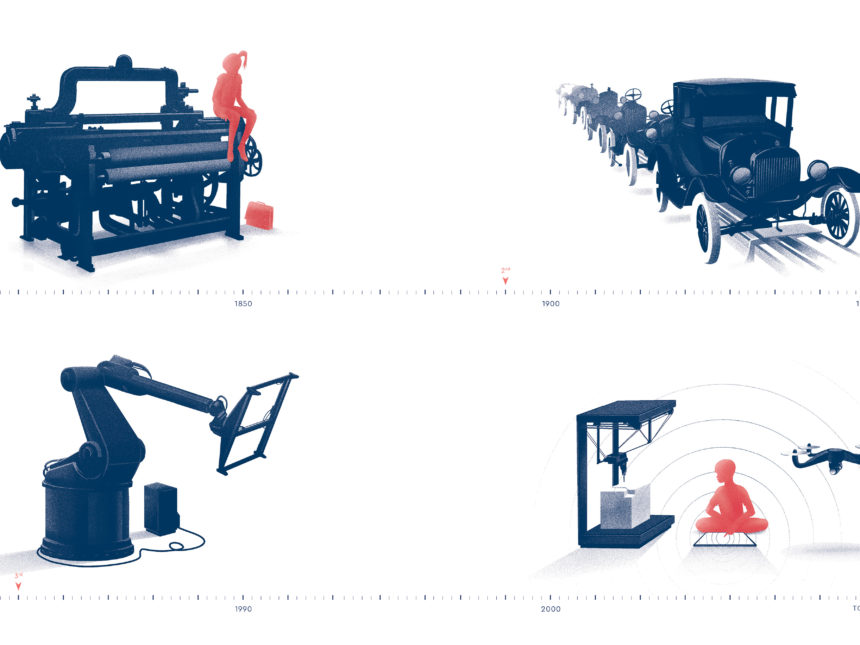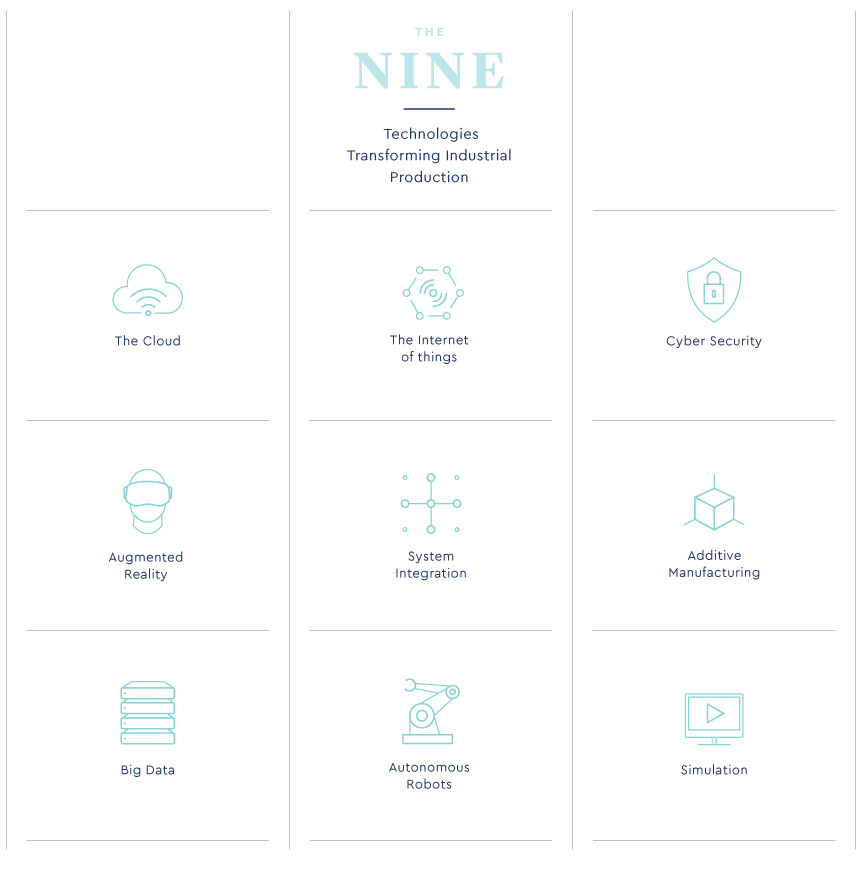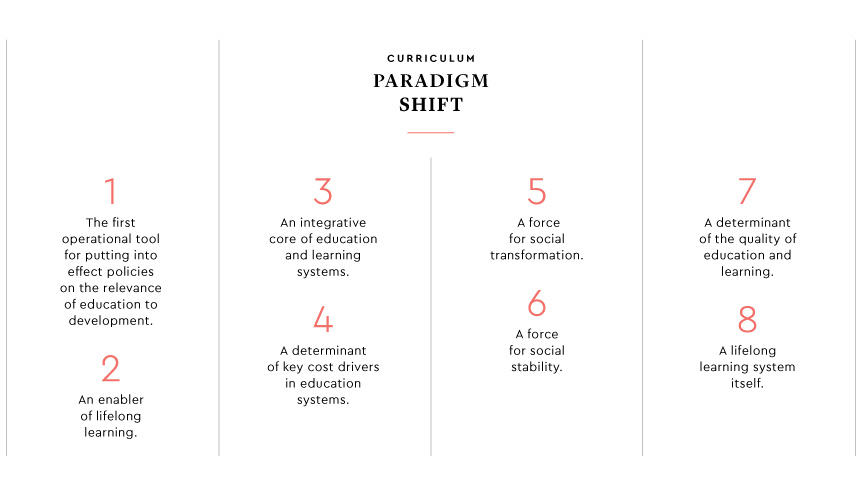
Curriculum
Future Competences for Future Generations
Preparing learners for the future we don’t know
April 19, 2018
As we know, there are known knowns; there are things we know we know. We also know there are known unknowns; that is to say we know there are some things we do not know. But there are also unknown unknowns —the ones we don’t know we don’t know. And…, it is the latter category that tend to be the difficult ones. —Donald Rumsfeld
illustration by Daniel Stolle
Change is the only constant in the 21st century. Industry 4.0 accelerates change, uncertainty, and complexity in the 21st century. Schwab (2015) aptly notes that Industry 4.0 is a technological revolution whose velocity, scale, scope, complexity, and transformative power are unlike anything humankind has experienced before.
By Mmantsetsa Marope
19/04/ 2018
·
- Share
Propelled by technological breakthroughs, the world is described less and less through historical epochs that last decades. More and more, it is described through ‘revolutions’ of unparalleled velocity and unknown transformative power. At the start of this century, the technology and information revolution was all the rage. By the second decade, the ‘industrial revolution’ had taken over. The world is abuzz with comparisons of the first, second, third, and fourth industrial revolutions, and forecasters are already talking of the fifth. The lag time between each revolution is shrinking, while the complexity between one and the next grows exponentially.
But what is Industry 4.0?
Consensus is emerging on the general markers of Industry 4.0 and what sets it apart from previous industrial revolutions other than its pace, complexity, velocity, and transformative power. It is commonly characterized as an era where physical objects—machines, modes of transport, buildings, equipment, etc.—as well as processes and facilities, have sensors and embedded integrated systems that enable them to communicate via the Internet and to use Internet services. This phenomenon is referred to as the Internet of Things (IoT) or the internet of things, data, and services (Germany Trade and Invest 2014). These “things”, also referred to as cyber-physical systems (CPSs), are equipped with adaptable sensors that enable them to scope their environments, access globally available data, analyze and interpret them to predict failures, configure themselves and adapt to pertinent elements of their changing environments (ibid). They are intelligent “things” that can act on the results of their analyses. Through their integration and connectivity, they are also able to share the results of their analysis through the Internet. This “intelligence of interconnectivity” is transforming the workplace. Intelligent machines are headed toward autonomous action, and the management of production throughout the whole value chain. Future machines will go beyond just processing products and will also communicate with the product to perfect and optimize production.

From Industrie 1.0 to Industrie 4.0: Comparing the four industrial revolutions. Source: DFKI (2011). Illustration by Daniel Stolle
Industry 4.0 is already fueling demands for new competences in the workplace. Industry 4.0 frontline workers must be capable of working with new forms of human-machine interfaces. They must efficiently manage production processes executed by intelligent machines in smart factories. Back office workers must be innovators, designers, analysts, and developers of the sensors, open systems, big data, connectivity, virtual communication systems, etc.—people who can sustain the Industry 4.0 production paradigm. Industry 4.0 also demands senior experts and managers who can guide the work of technologists, for example, by clearly articulating the ultimate purpose of their smart factories, creating innovative products, designing production models, and positioning themselves competitively.
For future employees, this is a huge improvement from Warren Bennis’ prediction that the future factory will have three employees: a machine, a man, and a dog. The machine will be there to do the work, the dog will be there to keep the man from touching the machine, and the man will be there to feed the dog. The Industry 4.0 “man” will do more than just feed the dog!
Pervasiveness of Industry 4.0
Industry 4.0 is about more than just avant-garde production technologies. It is about how technology will more insidiously permeate all facets of life. “It will change not only what we do but also who we are… our identity and all the issues associated with it: our sense of privacy, our notions of ownership, our consumption patterns, the time we devote to work and leisure, and how we develop our careers, cultivate our skills, meet people, and nurture relationships. It is already changing our health” (Schwab, 2015). It will permeate all domains of life including the private, humanistic, social, cultural, physical, digital, biological, analytical, educational, security, and ethical. It will dominate workplaces, tools of work and ways of working. It will transform the way we learn and will make learning anytime and anywhere a reality for most people on earth. For those who are prepared, opportunities abound. For those who are not, the risk of falling behind is huge, and the effort to catch up is daunting.
Are education systems preparing learners for the future we don’t know?
While consensus on the broad markers of Industry 4.0 is emerging, details on the look of the future remain unknown. Unknown as the future may be, it is a future for which we must prepare. Naturally, education and learning systems are expected to prepare people for Industry 4.0. On global, regional, and national platforms, the raging debate is on the readiness of education and learning systems to prepare learners—young and old—for this unprecedented change. If the systems are not ready, then what is required to ready them? This debate fits squarely into that on the role of future curricula. It raises questions on what people should learn in Industry 4.0 and for what purpose.

The 4th Industrial Revolution will change not only what we do but also who we are. It will affect our identity and all the issues associated with it: our sense of privacy, our notions of ownership, our consumption patterns, the time we devote to work and leisure, and how we develop our careers, cultivate our skills, meet people, and nurture relationships. —Klaus Schwab, The Fourth Industrial Revolution: What it means, how to respond. World Economic Forum, 14 June 2016. Source: BCG (2015).
The future curriculum
Changing demands for competences in the workplace have direct implications for education in general, and for curricula in particular. Industry 4.0 accentuates the need for curricula that can enable learners to acquire and effectively deploy multifaceted, transdisciplinary, technologically savvy, and integrated competences. Not surprisingly, education systems are fast adopting competence-based curricula orientations.
The IBE advocates a paradigm shift on curriculum that recognizes the need for curriculum to take on many roles: it must lead as well as adapt to change; it must also balance stability with agility, respond to predictability and uncertainty, and balance the instrumentalist with the core functions of education. The paradigm also calls for the recognition of eight facts about curriculum. It is (i) the first operational tool for putting into effect policies on the relevance of education to development; (ii) an enabler of lifelong learning; (iii) an integrative core of education and learning systems; (iv) a determinant of key cost drivers in education systems; (v) a force for social transformation; (vi) a force for social stability, (vii) a determinant of the quality of education and learning; and (viii) a lifelong learning system itself.
Accepting the first precept of the new paradigm demands that we adopt a competence-based approach to curriculum design, development and implementation. To be development relevant, curricula must enable learners to acquire the competences they will require to meet challenges and take up opportunities in the ever-changing 21st century contexts, the most immediate of which is Industry 4.0. Sustaining development relevance in the face of fast and constant change requires that curricula themselves be lifelong learning systems (precept viii), capable of constant self-renewal and innovation. Without this precept, curricula are at risk of propagating obsolete competences that are not connected to their contexts. To mitigate this risk, the IBE will establish a global observatory with foresight and anticipatory capacity to ensure that curricula remain relevant to development.
But wait! While change is inevitable, we should be cautious about the potentially destabilizing impact of constant curricular reforms in the name of contextual responsiveness. Equally, due effort should be made to safeguard the core functions of education and learning, even as education and learning systems pursue their instrumentalist functions in the name of relevance. Rapidly changing contexts therefore demand very delicate balances among the key precepts of curriculum design.
In the new paradigm, competence is defined as a developmental capacity. People must be able to interactively mobilize information, data, technology, knowledge, skills, values, and attitudes, and then use them ethically to engage effectively and act across diverse 21st century contexts for individual, collective, and global good.
This definition acknowledges that it is no longer sufficient to enable learners to just acquire discrete bodies of knowledge, skills, values, etc. It is critical that learners can intelligently make connections across elements of competence, and then integrate them and apply them interactively, to respond to contextual demands as well as to change their contexts. What learners learn is necessary, but no longer sufficient. What is most critical is what they can do with what they have learned and what they can do across the fast-changing contexts of the 21st century in general and Industry 4.0 in particular. In sum, future curricula have to reflect competences that prepare learners for the future we don’t know.
But what are those future competences?
The framework on the next page illustrates the espoused definition of competence. It lists elements that interact in application to manifest future competences: (i) information; (ii) data; (iii) technologies; (iv) knowledge; (v) skills; (vi) values; and (vii) attitudes. It presents future competences in six macro-level categories: (i) lifelong learning; (ii) multi-literateness; (iii) trans-disciplinarity; (iv) self-agency; (v) interacting with others; and (vi) interacting in and with the world. The six macro-level competences are considered universally relevant. Because of their universality, they are quite stable. They are what give curricula stability across transformations and reforms. They are the bigger picture and the bigger why of a curriculum.
Beyond curriculum stabilizers, the framework presents examples—not an exhaustive list—of specific or micro-level competences that contribute to the macro-level ones. Micro-level competences are mostly adaptable to context; they are what allow curricula the agility to be contextually relevant. For instance, global citizens of the 21st century absolutely must be multiliterate. However, different contexts demand different types of literacies; consider that Industry 4.0 puts a strong emphasis on digital, data, and ICTs literacies. Multilingualism is equally essential, but different contexts require different languages. Coding is gaining more prominence as a major language in Industry 4.0.
The framework also presents examples of the individual, collective, and public ‘good’ that should accrue from having certain competences; these show the impact of competence. Notably, many of these ‘goods’ would accrue from different categories of competences. The framework only suggests which ‘goods’ are closely associated with which categories of competences.
Lifelong learning
The most critical competence in the 21st century is knowing how to learn. What is learned remains important, but in fast-changing contexts, it is at a high risk of becoming obsolete, and/or quickly forgotten. Knowing how to learn has more premium and regenerative
capacity than what is learned. Lifelong learning is the source of innovations, adaptability, agility, and human resilience, especially in fast-changing contexts.
Self-agency
The 21st century demands people to be self-benefiting agents. This requires the facility and empowerment to analyze the demands of one’s environment and to apply knowledge, skills, technologies etc., to take a self-benefitting and self-fulfilling action. This requires many of the adaptable competences provided in the framework below.
Interactively using diverse tools and resources
Increasing complexity also demands effective and interactive use of a range of tools and resources relevant for the task at hand. These resources go beyond the constituent elements of competence to include physical and virtual resources, the interface of the self and machines in smart factories of Industry 4.0, the use of multiple technologies, of time, etc. Responsible use of tools and resources is also at the heart of responsible consumption and sustainable lifestyles, which contribute to sustainable development.
Interacting with others
Even with multi-literateness and trans-disciplinarity, the level of integration and complexity in the 21st century requires working with others. This is also a key competence for social cohesion, harmony, justice…and ultimately for a peaceful and reconciled future.
Interacting in and with the world
This competence enables people to straddle many contexts and to interact effectively and act across a range of contexts from the local to the global.
Trans-disciplinarity
Deepening complexity requires more and more integrated solutions that call on knowledge of multiple disciplines and multiple domains of knowledge. Application is at the heart of competence, and an emphasis on application demands a deeper command of the disciplines. As with literacies, deep and narrow specialization will remain essential, especially in workplaces, but narrow specialists will be tremendously challenged in daily life where making an impact will demand a decent level of understanding of several disciplines.
Multi-literateness
The 21st century requires people to have multiple literacies and to deploy them as needs arise. Basic literacy (the three Rs) is no longer adequate. It is perhaps more appropriate to speak of fundamental literacies. These go beyond the three Rs to include examples listed in the framework. These are fundamental in the 21st century and even more so in Industry 4.0. Literacies are also not dichotomous; in this century no one is simply either literate or illiterate. Instead, we are all on a continuum ranging from entry level to great expertise. Industry 4.0 will put more demand on people to be multi-literate. Within these literacies, different contexts will demand different levels of skills and people will deploy them differentially according to the demands of each context.
While presented as a list, these core competences are interdependent and mutually reinforcing. Impactful action often demands simultaneous deployment of multiple competences. Adopting a competence-based approach to curriculum—and more importantly, implementing such an approach, and then maintaining a futuristic perspective to curriculum—has far-reaching demands on countries’ capacities. It has transformative implications for the future of not only the curriculum, but also its key implementation processes teaching, learning, assessment, and resourcing. But no country can afford to be left behind.
References
Germany Trade and Invest (2014). Industrie 4.0: Smart manufacturing for the future. Berlin: GTAI.
BCG [Boston Consulting Group] (2015). Industry 4.0: The future of productivity and growth in manufacturing industries. Boston, MA: Boston Consulting Group.
Schwab, K. (2015). The fourth industrial revolution: What it means and how to respond. Davos: World Economic Forum.


